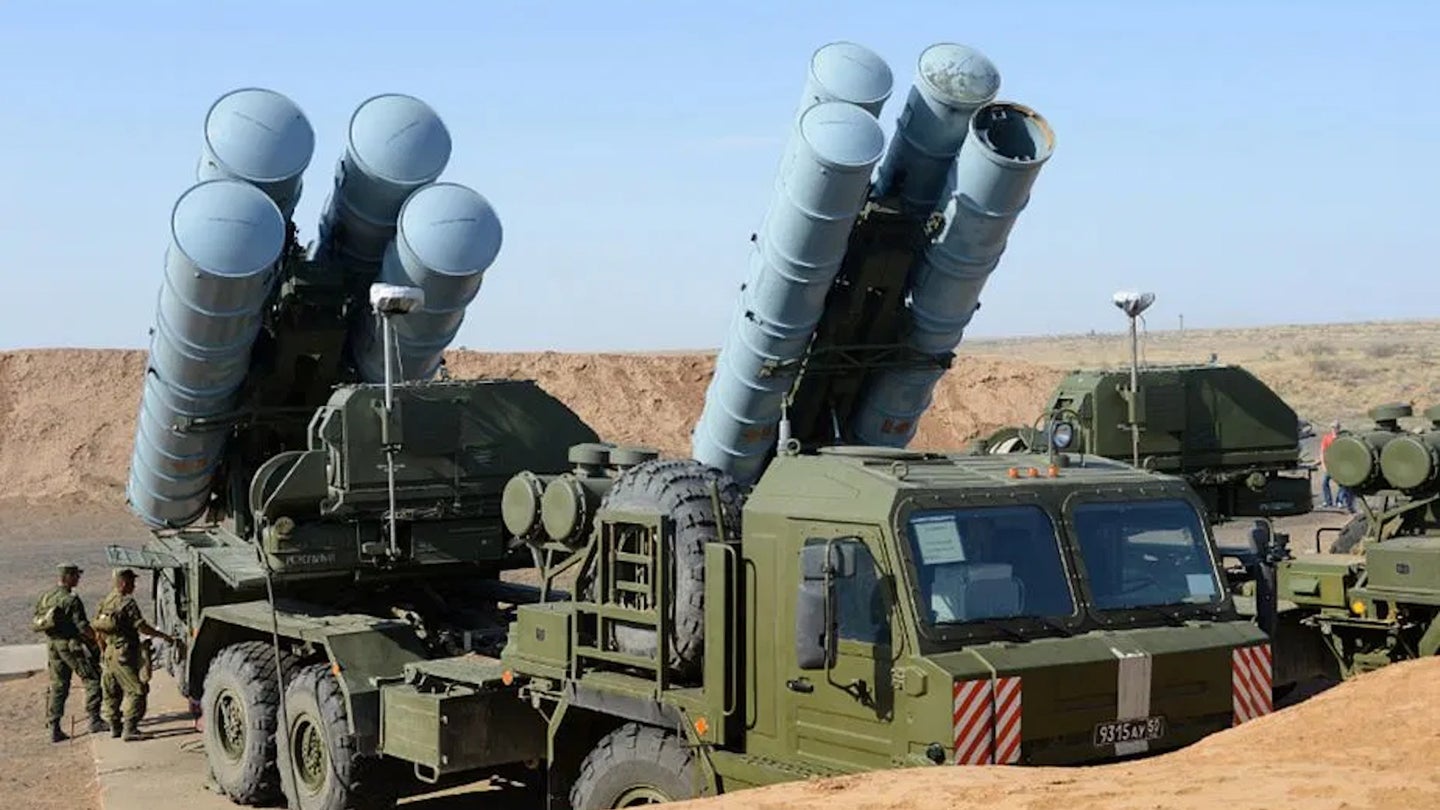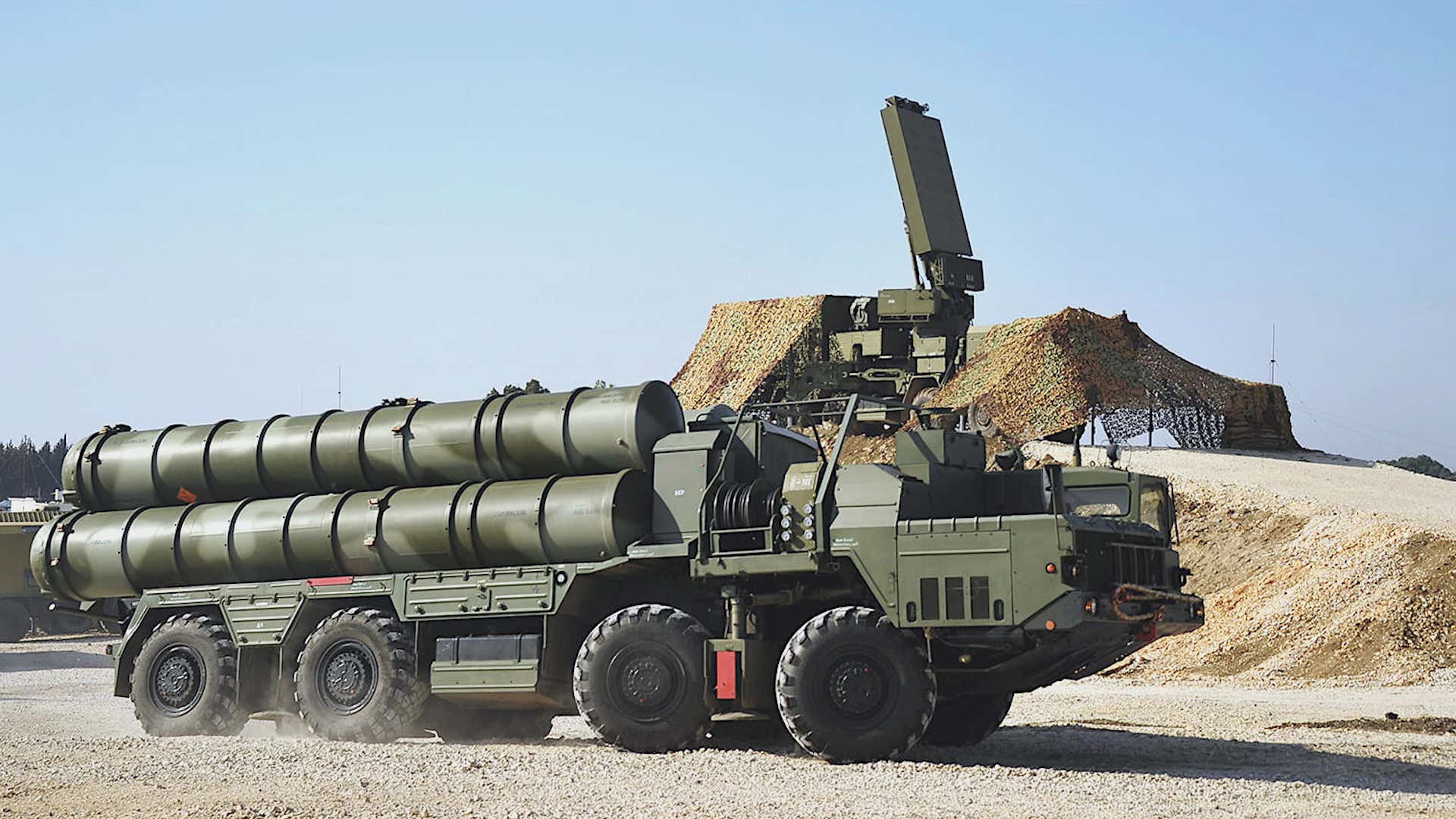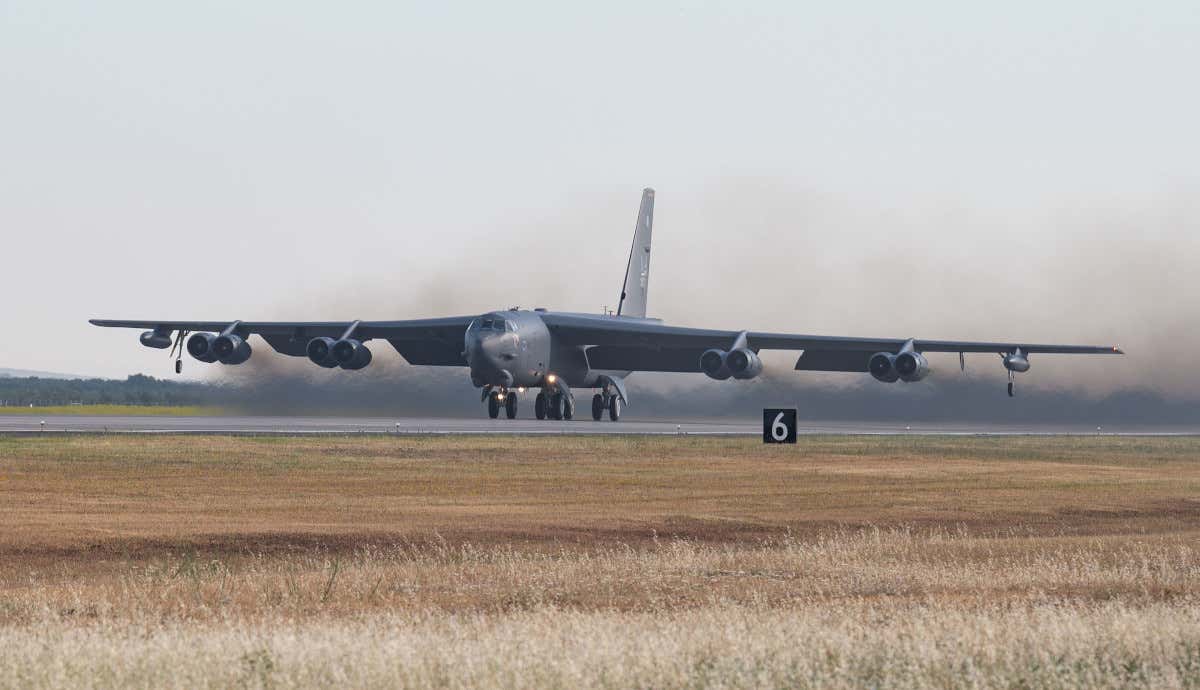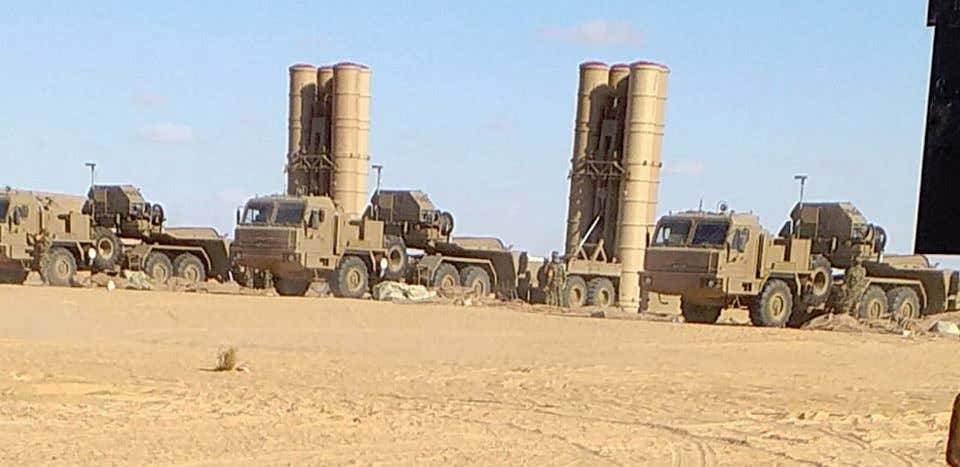JOSEPH TREVITHICK

Twitter user @kmldial70 was among the first to notice the mention of the mock strikes on the S-400s in footage that the U.S. Army's Southern European Task Force-Africa (SETAF-AF) recently released of a Command Post Exercise (CPX) being run at a facility in Agadir, Morocco, as part of the larger African Lion 2021 event, on June 9, 2020. A CPX is typically an entirely simulated wargame. African Lion 2021 kicked off on June 7, 2021, and is set to wrap up on June 18.

SPUTNIK / DMITRIY VINOGRADOV
Components of a Russian S-400 surface-to-air missile system.
"Two strikes were conducted against those two S-400s," an individual is heard saying in English at one point in the video, seen above, which is made up of a number of disjointedly edited-together clips, during what appears to be a briefing on new developments as part of the scenario. "We are still awaiting battle damage assessments [BDA] from yesterday's strike."
SETAF-AF, which is the Army's main Africa-focused component and is based in Italy, is leading African Lion 2021. The Army announced last year that it would merge U.S. Army Africa (USARAF) with U.S. Army Europe (USAREUR) to form a consolidated command, U.S. Army Europe and Africa, to oversee Army operations in and around both continents last year.
It's unclear what assets the CPX participants employed to carry out these simulated strikes. AFRICOM has said that unspecified U.S. and Moroccan fighter jets, as well as American bombers, have or will take part in other portions of African Lion 2021, as they have in other iterations of this exercise. At least one B-52H bomber flew a training mission to West Africa's Gulf of Guinea from Moron Air Base in Spain on June 9, but it's not clear if this was related to African Lion 2021.

USAF
A B-52H bomber takes off from Moron Air Base in Spain for a mission over the Gulf of Guinea.
In addition, Morocco flies advanced Block 52+ F-16C/D Viper fighter jets that could be employed in the suppression and destruction of enemy air defenses, missions sets commonly abbreviated as SEAD and DEAD, respectively. In 2018, there were reports that the country was looking to acquire AGM-88E Advanced Anti-Radiation Guided Missiles (AARGM) to bolster the ability of F-16s to carry out these missions.
High Mobility Artillery Rocket Systems (HIMARS), which are capable of firing short-range ballistic missiles, in addition to 227mm artillery rockets, have also taken part in other segments of the exercise.
In addition to the specific mention of S-400s, it is also interesting to note that the simulated strikes were conducted in a fictitious country created for the exercise called Rowand. A map that is visible at one point in the video from the CPX shows Rowand, as well as its equally fictional neighbor Nehone, situated in areas of Northeastern Algeria.
It is not clear if Algerian forces are taking part in African Lion 2021 in any way. Algeria's real-life neighbor Tunisia is participating in the exercise and was set to host a CPX, as well as small unit tactical training, according to an official Africa Command (AFRICOM) press release sent out on June 7. The annual African Lion exercise started as a bilateral training engagement between the U.S. military and its Moroccan counterparts, but has since evolved into a regional event. This year's iteration also includes various training in Morocco, as well as Senegal, in addition to Tunisia. Ghana, where AFRICOM established a logistics hub in 2019, is supporting the exercise, a well. A number of other countries in and outside of North and West Africa are also actively taking part in the training or have sent observers.
There is also no indication that the scenario actually reflects strikes on Algeria, which has been an important partner of the United States in combating regional terrorist groups, in any potential future conflict, either. Though there have been persistent rumors that the Algerian military has fielded S-400s, there is no clear evidence to substantiate those claims. Algeria did receive S-300PMU-2 surface-to-air missile systems from Russia starting in 2010, and at least one picture that some have suggested shows transport-erector-launchers (TEL) associated with Algerian S-400s appears to actually be of these earlier acquisitions. A number of configurations of the S-400 system, originally known as S-300PMU-3, use variants of the same TELs employed with the older S-300PMU-2.

JACK GLODEL VIA WIKIMEDIA
Transporter-erector-launchers associated with Algeria's S-300PMU-2 systems, which have been misidentified as being related to purported S-400 systems in the past.
At the same time, within the general context of African Lion 2021, as well as with regards to Tunisia, specifically, it is worth remembering that Tunisia also borders Libya to the east. In August 2020, pictures emerged on social media that purported to show the deployment of S-300 or S-400 surface-to-air missile systems to that country. The appearance of those images came amid a surge in fighting, and an expanding air war, between the U.N.-recognized and primarily Turkish-backed Government of National According (GNA) and the Libyan National Army (LNA), which has received support from Russia, among other foreign powers.
In September 2020, U.S. Navy Rear Admiral Heidi Berg, AFRICOM's top intelligence officer, told reporters that the command did not believe S-300s or S-400s had been deployed in Libya, but that it believed Russia was interested in doing so. Earlier in the year, the Kremlin had sent MiG-29 Fulcrum and Su-24 Fencer combat jets, along with Pantsir-S1 point air defense systems and other weapons and military equipment, to bolster the LNA forces. Russian mercenaries from a company called Wagner, which has strong ties to Russia's intelligence services and that has been involved in the conflict in Libya for years now, are believed to be primarily responsible for flying the aircraft and operating the Pantsirs. The LNA recently released a video, seen below, that was clearly meant to show that its own pilots have been the ones at the controls of the Russian-supplied jets.
In October 2020, the GNA and LNA agreed to a new ceasefire deal, which included provisions for future talks on finally bringing the country's civil conflict to an end for good. However, this peace is fragile as the LNA, and its leader Khalifa Haftar, continues to operate a parallel government to that of the GNA and maintains its significant independent military capabilities. The next round of GNA-LNA talks is scheduled to take place in Germany later this month and will reportedly focus on the matter of foreign troops and mercenaries, which have been fighting on both sides, as well as nation-wide elections planned for December.
The matter of the proliferation of the S-400 system is hardly limited to Northwest Africa, either. The presence of Russia's own S-400s in Syria and the Crimean Peninsula, the latter of which the Kremlin seized from Ukraine in 2014, among other regions, have become major security considerations, generally.
With that in mind, it's worth pointing out that AFRICOM has said that the 2021 iteration of African Lion is now tied in directly with U.S. European Command’s (EUCOM) Defender-series exercises. The first Defender-Europe exercise took place in 2020 as a new, over-arching training event that would link together multiple smaller regularly-held exercises and was focused on strengthening U.S. military cooperation with NATO allies and other partners in Europe with a clear, if unstated focus on deterring Russia aggression. Though the timing was incidental, this year's iteration of Defender-Europe followed a particularly worrisome Russian troop buildup along that country's borders with Ukraine.
The Kremlin has also been pushing for export sales of the S-400 to a number of other countries, especially in the Middle East, including Iran, in recent years. The Russian government has sold S-400s to China, India, and Belarus, among others, too.
In 2017, Russia notably secured a sale of these surface-to-air missile systems to Turkey, a NATO member, as well, which touched off a major spat between authorities in Ankara and those elsewhere across the Alliance, especially in the United States. Operational security concerns stemming from this purchase ultimately led to Turkey's expulsion from the F-35 Joint Strike Fighter (JSF) program.
The S-400 and S-300 are not the only longer-range surface-to-air missile systems on the international market, either. For example, China offers the FD-2000, an export variant of its HQ-9, itself an S-300 analogue. Before signing the S-400 deal with Russia, Turkey had also planned to buy FD-2000s, before canceling that order in the face of pressure from the United States.
The increasing proliferation of these kinds of longer-range air defense capabilities, as well as of more modern short and medium-range surface-to-air missile systems, can add complications for the U.S. military, among others, when planning future missions, even in historically lower-risk environments in support of more limited operations.
All told, this CPX conducted as part of African Lion 2021 certainly seems to underscore general concerns about the expanding availability of S-400s and similar-long-range surface-to-air missile systems now available on the export market.
No comments:
Post a Comment